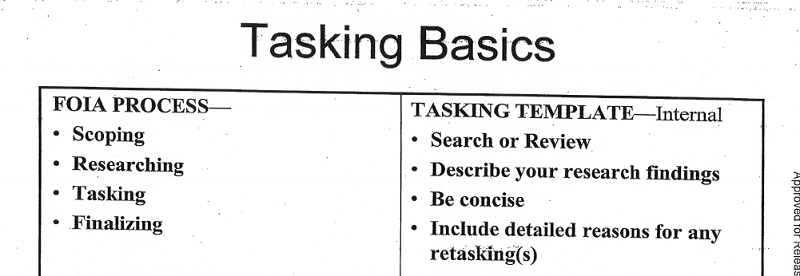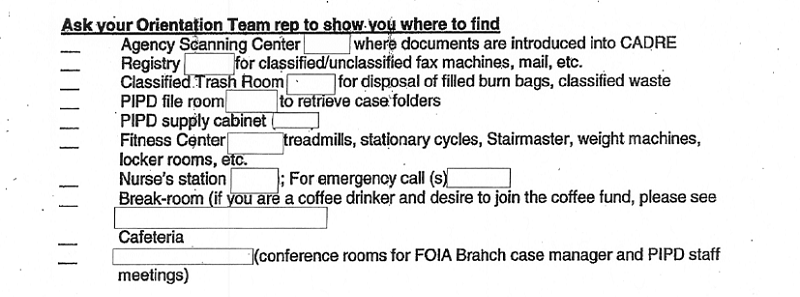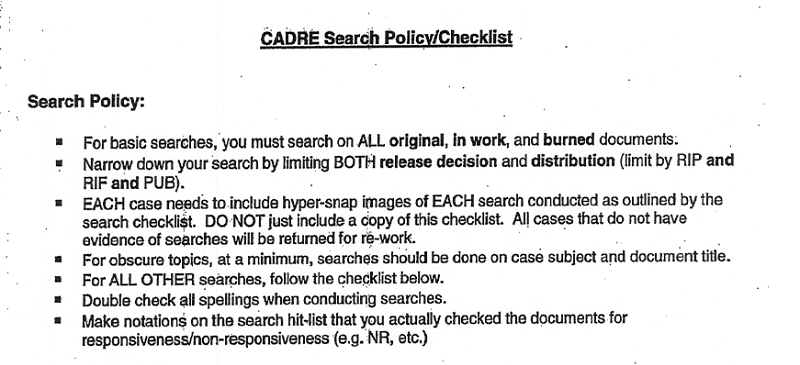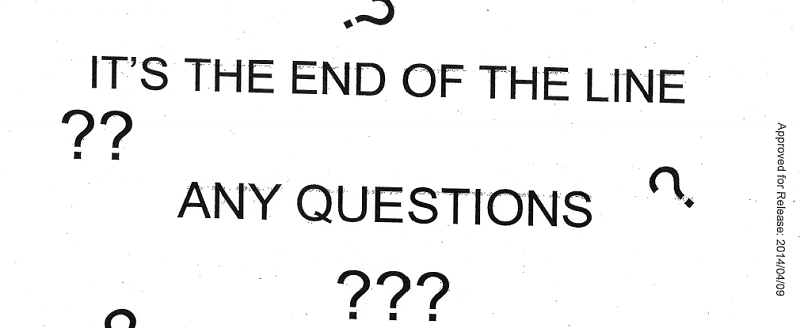America’s favorite bureaucratic behemoth, the Central Intelligence Agency, is notoriously one of the most difficult agencies from which to get a straight answer.
Unsurprisingly, they’re particularly Flubber-like when it comes to FOIA, earning it the esteemed recognition of being the first agency sued by MuckRock. Around the same time, MuckRock received a collection of orientation-type materials for new FOIA officers in response to a request for the CIA’s FOIA processing procedures: checklists, templates, a Power Point.

Follow-up requests have been made for materials in further training for less fresh-faced FOIA officers (the training schedule outlines at least five months of work for would-be FOIA agents) but their workflow is useful for understanding the how the important points that get the process going.

Near the bottom of the list of new places and faces that FOIA branch employees should acquaint themselves with - but reasonably of higher priority in the American office place - is the break room. Noteworthy is the line “if you are a coffee drinker and desire to join the coffee fund, please see….”

What? The CIA and coffee-producing countries may not be on the best of terms, but the implication that it’s BYOC for the people tasked with digging through the agency’s haystacks suggests even greater inefficiency than previously imagined. But I digress.
Besides the Scanning Center, the Classified Trash Room, and the Cafeteria, there’s a slew of people that staffers need to be familiar with. We’re not sure who those are exactly, because ten of the eleven individuals or groups listed as primary introductions have been redacted; they all seem to be more important than the Information Resources Office personnel.
Bits and pieces are redacted throughout the materials, including most of the Internal Public Information Programs Division policies. Usually cited is the b3 exemption alongside the CIA Act. In the small section about the b2 and b5 exemptions, the CIA plays cute by noting that “Exemption (b)(5) can still be used, but only judiciously.” They then redacted the rest of the section using the (b)(5) exemption.

Emphasis is placed on CADRE (CIA Automated Declassification Review Environment), the database used for CIA FOIA case management. According to the CADRE Search Policy/Checklist, “hyper-snap images of EACH search” must be taken, suggesting that a screenshot breadcrumb trail exists for those dissatisfied with the results of a request’s search. According to the rules, if such evidence of the searches doesn’t exist, “re-work” is mandatory. Similarly the FOIA Tasking Template is required material and should included which systems were searched, what was found, and what material had been previously released.

In fact, templates seem to be the most important element of the FOIA process. The number 1 mistake according to the slideshow (which includes numerous slides on appropriate templates) is “Not using the templates or modifying them when appropriate!” Along those lines, it’s reiterated that the “FOIA Motto” is “Proofread. Proofread. Proofread.”

This makes it all the more satisfying to find that in the Summary of FOIA Fee Rules there’s this:

It seems as though no one took enough time to really emphasize that point or adjust the templates as necessary, guys. Suggested wording: “Did we say ‘fee’? We meant FREE.”
Take a look and let us know what you find, and check out the request page here. And the next time the CIA asks for money for a request, tell them to re-read their manual.

Image via CIA’s Flickr




